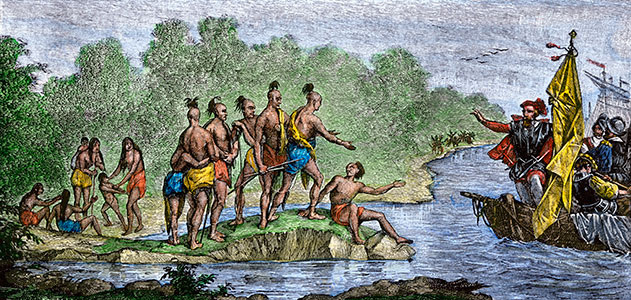The Impact of the Colombian Exchange on the Western Hemisphere
Technological impact
Many new goods and technologies were traveling over the ocean to new regions. Medicines such as Quanine, and goods such as rubber vastly improved the quality of life around the world as they reached new hands through the Colombian exchange. The Colombian Exchange allowed great minds to get their hands on new natural resources and thus these resources would get a new look and sometimes would be developed into very important goods that would impact.
Religious Impact
The Religion of Christianity was the first major unifying religion to enter the Americas. It was vastly helped spread by missionaries accompanying traders as well through conversion of slaves. The idea of Christianity, gave many slaves (especially in North America) hope. Christianity has a lasting effect today as the largest religion in the Western hemisphere.
Food and Domesticated Animals
Foods such as the banana and coffee first appeared in the Americas because of the Colombian exchange. Both are now vital products and exports of south America (Bananas in Ecuador and coffee in Colombia). Also the introduction of domesticated animals was a first in the Western Hemisphere due to the Colombian exchange including two major animals the Horse and the cow. The horse never before seen in the Americas, became a vital source of both labor and transportation in north America for hundreds of year to come. The cow became a significant source of both dairy and protein, become a sufficient resource of food spanning from North America all the way to Argentina.
Social structure
The introduction of slaves to the Americas brought upon two very distinct parts of the social pyramid. Slaves were a bottom end of this social hierarchy and now plantation and or farm owners were considered higher class, and higher socially. The women that had husbands who owned slaves were now more socially mobile and possessed more rights.
Works Cited:
http://www.kwintessential.co.uk/articles/colombia/Columbian-Exchange/5062
http://www2.newcanaan.k12.ct.us/education/components/scrapbook/default.php?sectiondetailid=5155&
http://www.digitalhistory.uh.edu/learning_history/columbus/columbus_menu.cfmhttp://en.wikipedia.org/wiki/Columbian_Exchange
http://www2.newcanaan.k12.ct.us/education/components/scrapbook/default.php?sectiondetailid=5155&
http://www.digitalhistory.uh.edu/learning_history/columbus/columbus_menu.cfmhttp://en.wikipedia.org/wiki/Columbian_Exchange

